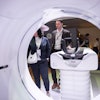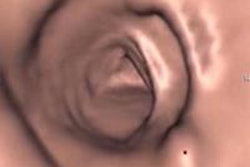Dear AuntMinnieEurope Member,
The countdown has begun for national governments on the implementation of the radiation safety directive from the European Union (EU). This directive looks set to have a major impact on radiology departments and industry, and it cannot be ignored, but at least two influential observers have important concerns about it.
For the inside track on the EU directive, go to our CT Community, or click here.
Ever heard of MR fingerprinting? Well, it seems to be making a comeback. The Maverinck, Dr. Peter Rinck, PhD, is deeply unhappy about its re-emergence. Find out why in our MRI Community, or click here.
Artifacts are an ongoing issue for anybody involved in MRI, but sometimes they can actually help with a diagnosis. Recognizing them is vital to reduce false negatives and false positives. A group of Portuguese researchers gave a refresher course on this topic at ECR 2015. Click here to learn more.
An uneasy peace has returned to Viennese hospitals this week. In a ballot, doctors at Austria's largest hospital voted overwhelmingly to support a strike, but a walkout now seems unlikely. Get the full details here.
Also, we have two news items about imaging advances in Alzheimer's disease.
First, Dutch researchers have shown that PET scans can detect varying levels of amyloid in the brain that change with age and with the presence of a genotype linked to Alzheimer's disease. Click here for our report.
Second, another Dutch group has used diffusion-tensor MRI to identify damaged white matter in the brain, and this may help pinpoint the early onset of Alzheimer's disease, as well as the start of two atypical forms of the condition. Click here for that article.




















